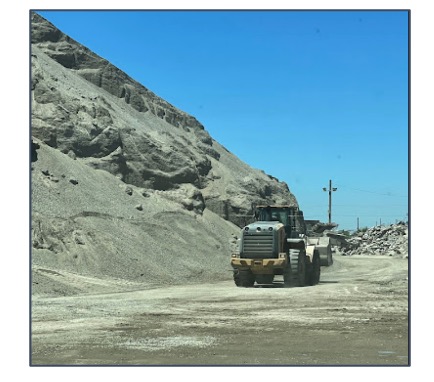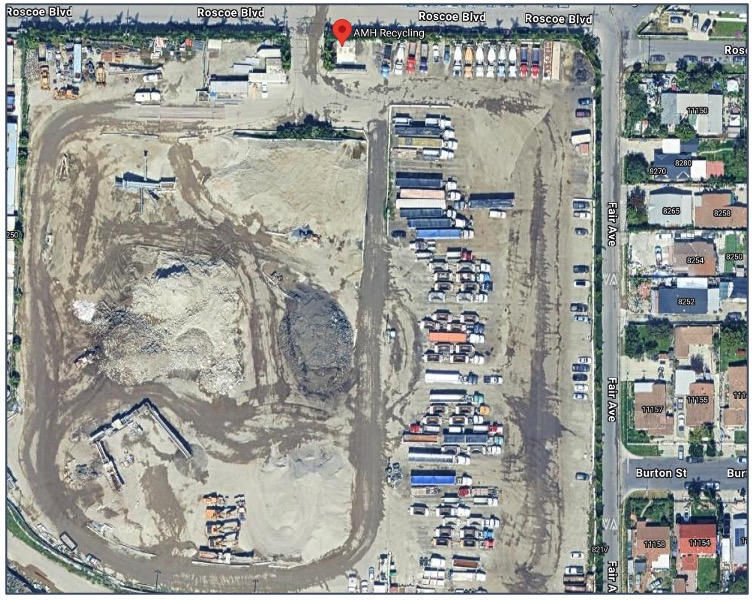Comments
SUN VALLEY - Sethi, Orchid, Miner, LLP (SOM) has filed a lawsuit against AMH Recycling on behalf of residents in Sun Valley. The complaint alleges trespass, public and private nuisance, failure to abate, and negligence. But that’s just the tip of the iceberg. AMH Recycling is one of many waste processing sites operating out of Sun Valley. But it’s a different breed of recycling, more dangerous to public health, silent killer.
Quite interestingly, decades ago a pollutant monstrosity such as AMH applied for tens of different permits and licenses from tens of different government agencies, yet not a single government associate raised the logical question: how this operation affected people. Consequently, AMH was given the green light to operate in very dangerous proximity to a largely single-family residential area and the one-and-only-of-its-kind Sun Valley Park and Recreation Center. But here is a kicker; AMH’s crushing yard is also sharing space with a two-decade old county green project known as Rory Shaw Wetlands Park. Million $$$ question is: what kind of a genius came up with a notion of an asphalt crushing operation coexisting side by side with a green flood control wetlands park?
But let me give you my take on this since Councilmember Padilla maintains silence every time this issue comes up. She prefers to look the other way understanding the consequences that will hit her hard once investigation of circumstances of AMH and many other dangerous polluters in the surrounding area kicks in; it will open the door to many undisclosed, unaddressed, and uncalled for concerns and violations within the city council and the county. The same holds true for Senator Menjivar who was vocal of environmental justice in Sun Valley during her campaign, not so much after election.
Fascinatingly, the root of all evil happens to be incompatible and outdated zoning and land use in Sun Valley park and adjacent areas. At their most basic, zoning laws follow a simple concept: in one part of town, only factories can be built, in another section of town, only apartment buildings can be built, and in a different part of town, only single-family houses can be built. Although zoning has long been a tool for protecting communities from harmful industrial encroachment, its early origins were rooted more maintaining social order, property values, and segregation by class and race. But as the zoning laws evolved, they began to serve other purposes such as excluding certain groups of people from high opportunity areas and making other areas like Sun Valley, a toxic hot spot. They later began to incorporate health and environmental considerations by separating residential areas from factories, freeways, and waste sites with significant impact on who had access to desirable neighborhoods.
The land on which AMH Recycling daily crushes asphalt and concrete is a designated M1 (Limited Industrial), M2 (Light Industrial), and M3 (Heavy Industrial) zone, whereas the majority of the surrounding area is an R1 Residential single-family zone. Thus, the perception that asphalt crushing operation exposes people to unhealthy levels of particulate matter, noise, ground vibration and nuisance, dumpster truck traffic congestion and causes a number of health problems, was clearly not a matter of concern for those tasked with issuing permits, conducting relevant studies of the area, and finally enforcing environmental laws. This has long been an environmental justice issue for those who live amid extreme pollution and noise contour of heavy industrial crushing operation where air pollution is at its worst. Ironically, there is low-income housing at the doorstep of AMH, which is also designated as a limited industrial zone (M1). In other words, it’s an unexplainable mix and not-a-match zoning game, and the city decided that it makes perfect sense to raise families within a designated industrial zone where AMH is crushing concrete and asphalt to sell the final product back to the city and the county – a wonderful green business at that. People inhale unhealthy levels of dust 24 hours a day, 7 days a week, they coexist with loud ground vibrations, noisy heavy dumpster and semi-trucks that haul uncovered construction waste every 3-5 minutes to and from AMH. Some “intelligent” city planner believed that permitting such polluting operation at a doorstep of single-family community is a damn good idea, and why not? After all, Sun Valley is a low-income community of color known for its notorious incompetent city, state, and county leadership.

Are the rules different if the residents are of low income? Do people of low income deserve less protection? I find it disturbing that people of low income live in unsafe areas that affect their health in many significant ways for their entire lives. Perhaps this is food for thought for councilmember Padilla, the Mayor, and the Supervisor. Or maybe environmental laws and regulations are for the most affluent? How much longer do residents of Sun Valley have to endure the city’s incompetence, carelessness, and negligence to life altering issues in the community?

Here is another kicker; AMH Recycling did NOT produce an Environmental Impact Report (EIR) because the zoning laws allowed to bypass the EIR requirement. In other words, human life was not a significant factor in final decision-making as existing incompatible zoning unquestionably warranted AMH’s existence in the minds of city planners and the elected. If this is not environmental racism and discrimination against a low-income community of color, then what do you call it? Remarkably, not a single government official questioned zoning and land use compatibility at the time of approving permits to operate. Sun Valley lacks infrastructure, green space, why couldn’t there be a shopping center instead of a concrete crushing recycling plant? Where does the South Coast Air Quality Management District stand in this process? Isn’t SCAQMD the regulatory agency tasked with protecting the public from air pollution?
Undoubtedly, zoning has evolved to shape not only the physical landscape of communities but also reinforce social and economic divides, perpetuating inequality, and limiting opportunities for particularly low-income and marginalized communities, such as Sun Valley, where not even a building and safety inspector can make sense of twisted zoning and land use ordinance.
Your house can be your dream home, but your dream could come to an end if there is a recycling plant in the backyard. And if you try to sell your house, who will buy it? Any pollution or noise could easily drift over to your house making selling and moving to a different place nearly impossible. But today, instead of protecting our home values, stopping renewal of contracts of existing developments of projects that potentially turn small communities into massive pollution, zoning and land use laws reinforce racial and class segregation. It is getting harder to build stuff in high-income areas that have control over development. Instead, unwanted developments and pollutants become easier to bring into low-income communities of color with less resistance, making people’s lives a living hell.

And, while the explicit racial component of zoning has faded, its legacy lives on in the way zoning and land use laws still disproportionately impact racial minorities and low-income communities, which leads to more pollution. Incompatible and outdated zoning and land use in Sun Valley Park Area is the only reason AMH and the likes operate here by not only reducing property values but also infringing on the right to use and enjoy our properties - a fundamental principle of property law. Zoning laws have contributed to environmental injustices. Low-income communities and neighborhoods of color are often targeted as sites for hazardous waste facilities, landfills, and other polluting industries. Zoning laws regulating industrial and residential uses have historically placed these harmful developments in poorer areas, while wealthier communities are largely shielded from these hazards. This has led to higher rates of pollution and health problems in such areas, perpetuating environmental racism and contributing to long-term health disparities. It’s time for urban planners and policymakers to step up and create fair and practical zoning system. Instead of sticking with outdated, restrictive policies, they need to make changes that reflect the needs of our communities, where zoning is not a barrier to growth but a tool for a more inclusive future. There are many locations outside the city limits to relocate AMH and the likes outside of Sun Valley Park, but again, Councilmember Padilla is nowhere to be found.
Residents of Sun Valley believe that this lawsuit will finally bring justice to the community that has been penalized and neglected by the city, county, and state for decades. If we want a thriving economy that truly supports people from all walks of life, we need to rethink zoning policies that leave communities vulnerable to unchecked development and environmental degradation. The solution lies in reforming zoning laws to strike a balance between protecting communities’ health and safety from harmful developments and ensuring that all residents – regardless of income - are given equal opportunities.
(Mariam Moore is a resident of Sun Valley, community and public health advocate, and an environmental activist. She is a volunteer at CPAB and a public servant.)
(Mihran Kalaydjian has over twenty years of public affairs, government relations, legislative affairs, public policy, community relations and strategic communications experience. He is a leading member of the community and a devoted civic engagement activist for education spearheading numerous academic initiatives in local political forums.)






